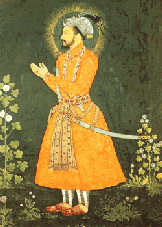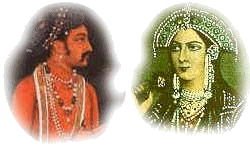Born in 1592, Prince Khurram, Jehangir's second son, ascends the throne of the Mughal empire on 24 January 1628 and takes the name of Shah Jahan. He inherits what is then the largest and richest empire in the world.
Decided to pursue the work of his predecessors, Shah Jahan conducts several military campaigns to extend the empire. If he succeeded in capturing some rajput kingdoms, he would nevertheless never succeed in penetrating Central Asia. In 1638 the emperor decided to make Delhi its capital.

He then leaves Agra and settles in a neighborhood of Delhi totally built for this occasion, Shahjahanbad. He built many architectural masterpieces (the Red Fort, the Jama Masjid, etc ...) and made the Throne of the Peacock in gold and precious stones.
To finance all this Shah Jahan increases taxes and creates taxes. His reign is also marked by a return to Islamist orthodoxy which is accompanied by numerous exactions against the Hindus.
But the reign of Shah Jahan remains mostly marked by the construction of his masterpiece: the Taj Mahal. On the death of his favorite wife, Mumtaz Mahal, who died in childbirth in 1631, Shah Jahan decided to build the most beautiful mausoleum in Agra. 20,000 workers and 20 years are needed to build this exceptional monument.
The 1650s marked the zenith of the Mughal empire. In 1657 Shah Jahan falls gravely ill. His four legitimate sons then disputed his succession. It is finally Aurangazeb who will surpass his brothers. On 8 June 1658 he decided to imprison his father at the fort of Agra and proclaimed himself emperor. Shah Jahan will spend the last years of his life locked up and bedridden in a room overlooking the Taj Mahal.
He died in 1666 and was buried alongside Mumtaz Mahal.

See also:



















